The par 72 Melbourne Course was opened in June 1992 and is the handiwork of design duo and former Ryder Cup golfers Peter Alliss and Clive Clark.
Both Alliss and Clark have spent many years excelling in various areas of the golf industry, and their encyclopaedic knowledge of the game shines through as soon as you set foot on the course.
The course provides an enjoyable challenge in stunning surroundings, crossing the River Lea on four occasions as you follow the natural contours of the Estate, before a memorable finish in front of the Hall after a short ferry ride to the 18th green.
The Capability Brown inspired parkland can truly be experienced in the Melbourne Course, with the sweeping lawns, clumps of well-placed trees and meandering river, challenging golfers to think about each and every shot.
Get a feel for the course with our
18-hole Course Tour

Hole 1
Par 4, Yards 316
Pro Tip
Not a long hole but one requiring an accurate tee shot to the left side of the fairway to allow for the slope. Second shot usually played from a sloping lie to a narrow green.

Hole 2
Par 3, Yards 190
Pro Tip
It is necessary to clear the water hazard and preferably finish on this raised green, as a chip shot from around the green can prove tricky.

Hole 3
Par 5, Yards 486
Pro Tip
An accurate tee shot to the right side of the fairway is needed, as everything slopes to the left, straightforward from here.
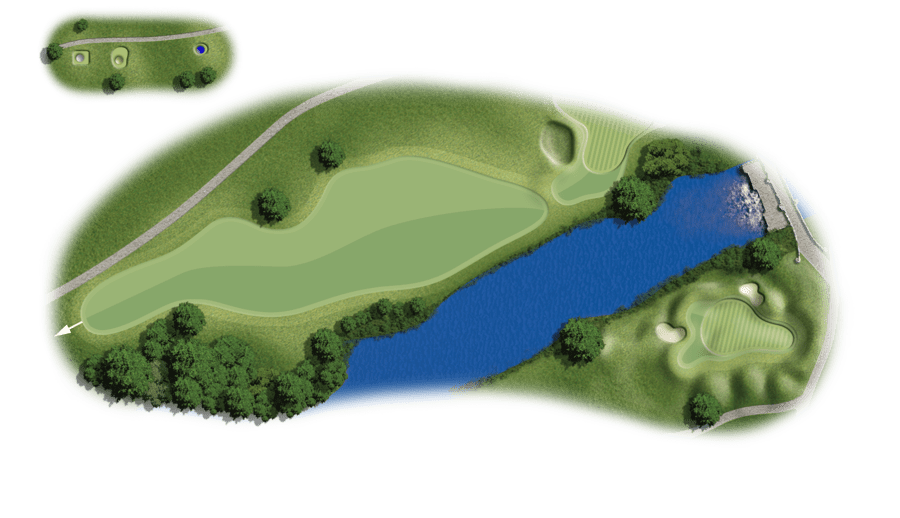
Hole 4
Par 4, Yards 443
Pro Tip
Two well struck shots are needed to reach this long par 4 in two. Aim the drive at the 16th
green, which you can see from the tee. The hole then dog-legs over the water to a narrow
green.
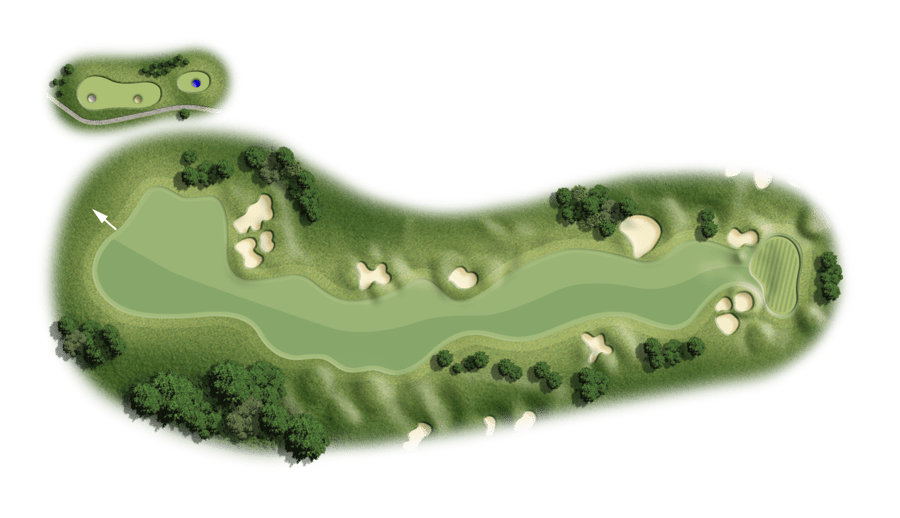
Hole 5
Par 5, Yards 479
Pro Tip
From the tee the bunkers on the left are to be avoided. The hole dog-legs to the left and every shot needs to be accurate to avoid the well-positioned bunkers. The green is shallow from back to front.
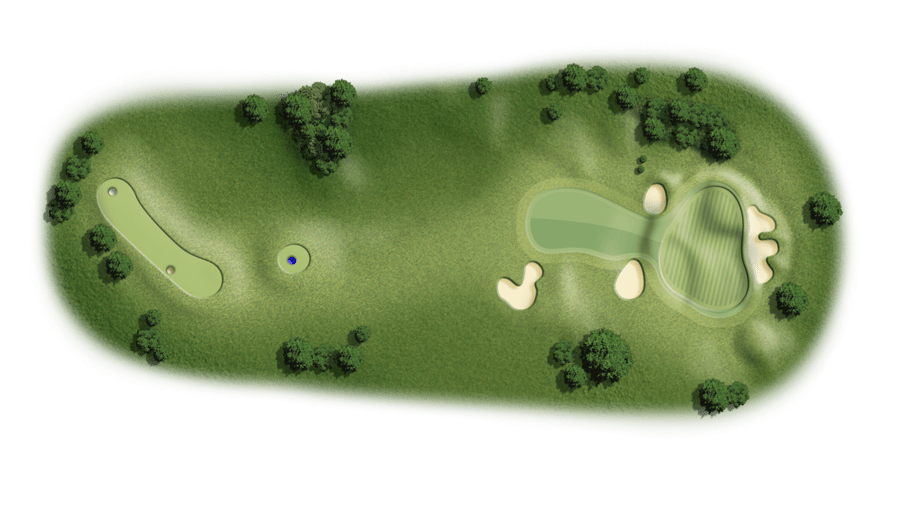
Hole 6
Par 3, Yards 171
Pro Tip
A well protected green that slopes from back to front, but frequently under clubbed.

Hole 7
Par 4, Yards 335
Pro Tip
The flag position dictates the positioning for the tee shot. Short second shot. The green is well protected by bunkers.
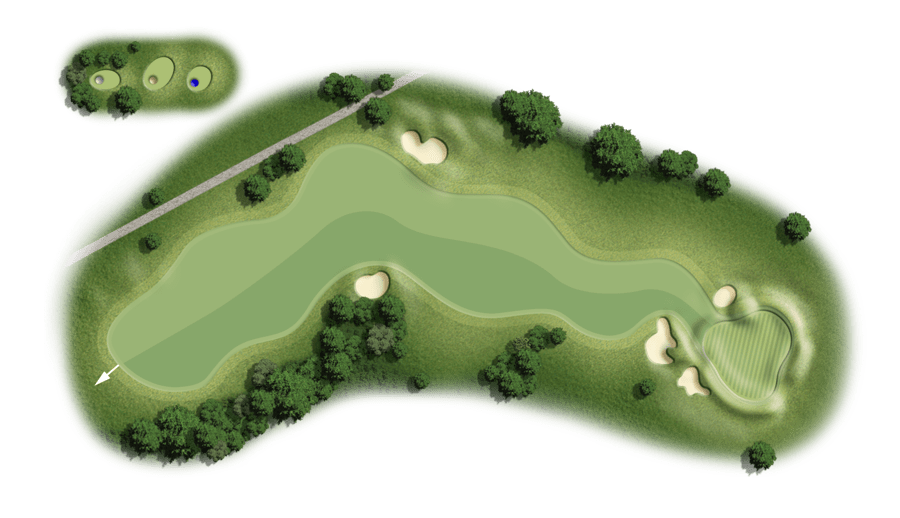
Hole 8
Par 4, Yards 386
Pro Tip
Long hitters can carry the corner, leaving a short approach shot. Average hitters aim for the
bunker on the far left of the fairway allowing for the left to right slope. Keep the ball low of
the flag on the green, as there is a severe slope from back to front.
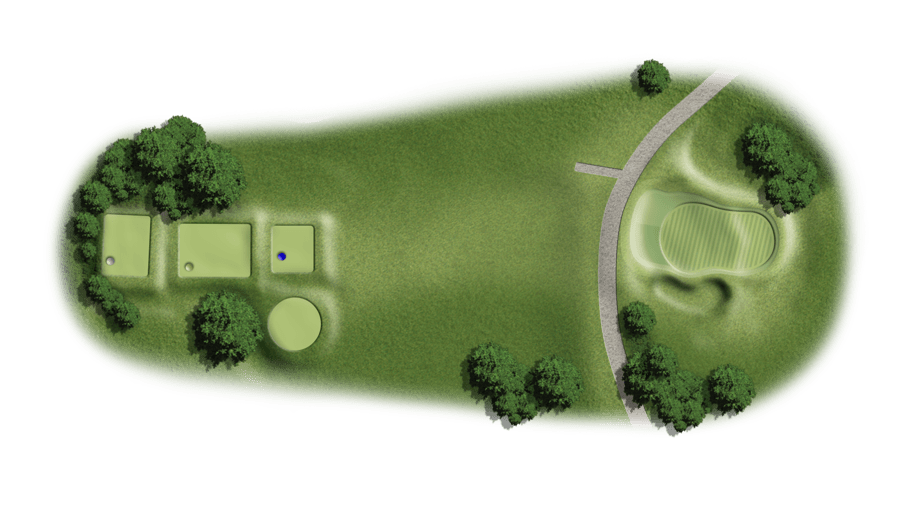
Hole 9
Par 3, Yards 145
Pro Tip
A very good short hole doesn’t play the full yardage due to the elevation of the tee.
Important to hit the green as everything slopes away to the sides of the green.

Hole 10
Par 5, Yards 522
Pro Tip
Dog-leg right par 5. Long hitters should aim at the fairway bunker on the right. Straightforward shot onto a green that is surrounded by bunkers.
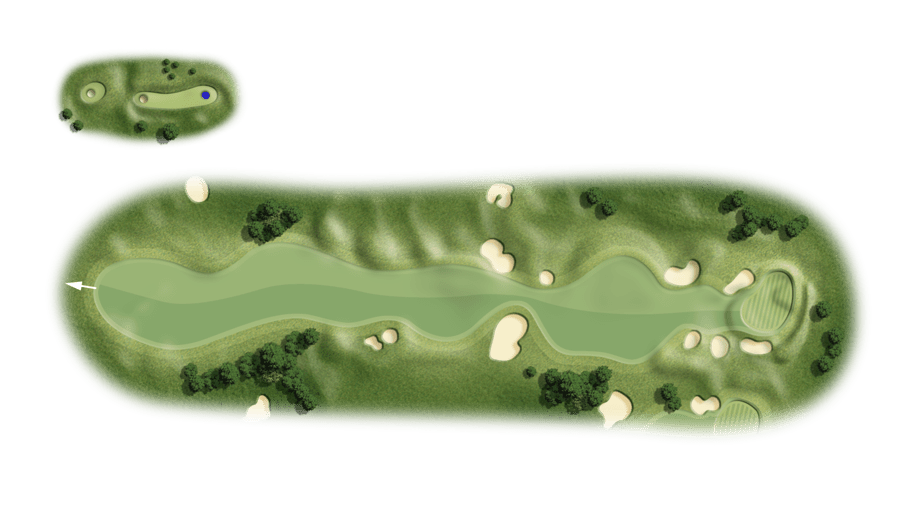
Hole 11
Par 4, Yards 456
Pro Tip
No real danger from the tee. However, it is a long hole and your approach shot to the green
is deceptive. Hit an extra club, as it is uphill. Green slopes from back to front. It is advantageous, therefore, to be short rather than long.

Hole 12
Par 4, Yards 368
Pro Tip
Long hitters can carry the fairway bunkers on this dog-leg right. However, a poor shot will be
punished, if the pin is back right it is advised to aim for the middle of the green.

Hole 13
Par 4, Yards 338
Pro Tip
An accurately positioned tee shot positioned down the left side of the fairway, often with an iron, is essential. This may create the chance of a rare birdie, after playing a short second to a relatively flat green.
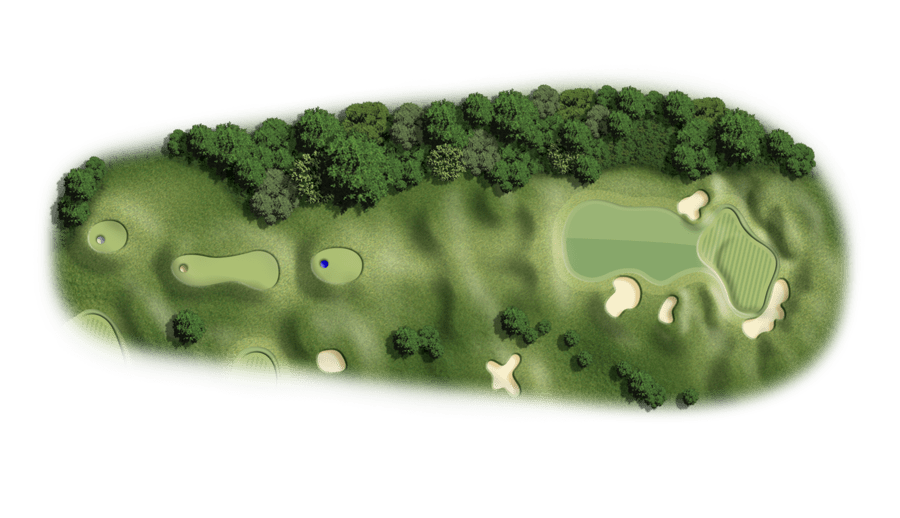
Hole 14
Par 3, Yards 218
Pro Tip
Long par 3 – difficult to hold the green. Allow the tee shot, therefore, to run onto the green.
Majority of trouble in the form of the bunkers to the right and rear of the putting surface.
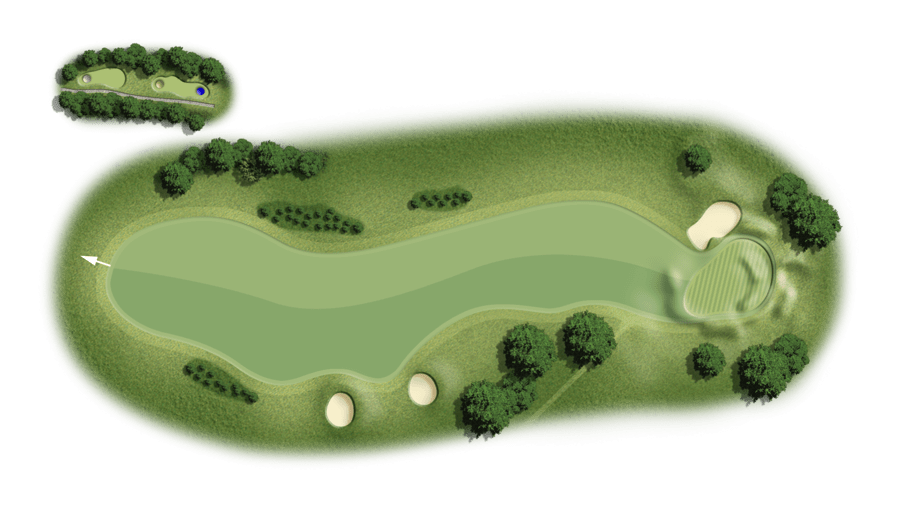
Hole 15
Par 4, Yards 380
Pro Tip
If the tee shot is too long, the large tree to the right of the green can obstruct you. Long hitters can carry the corner from the tee. However, you will be punished if the shot isn’t perfect.
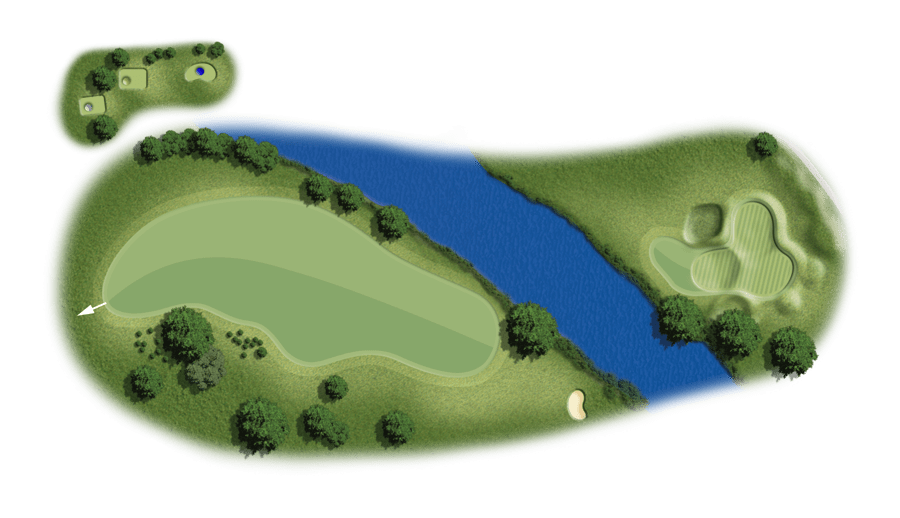
Hole 16
Par 4, Yards 410
Pro Tip
The line from the white tee is just to the right of the large Cedar. An accurate approach shot is essential to this large three tiered green.
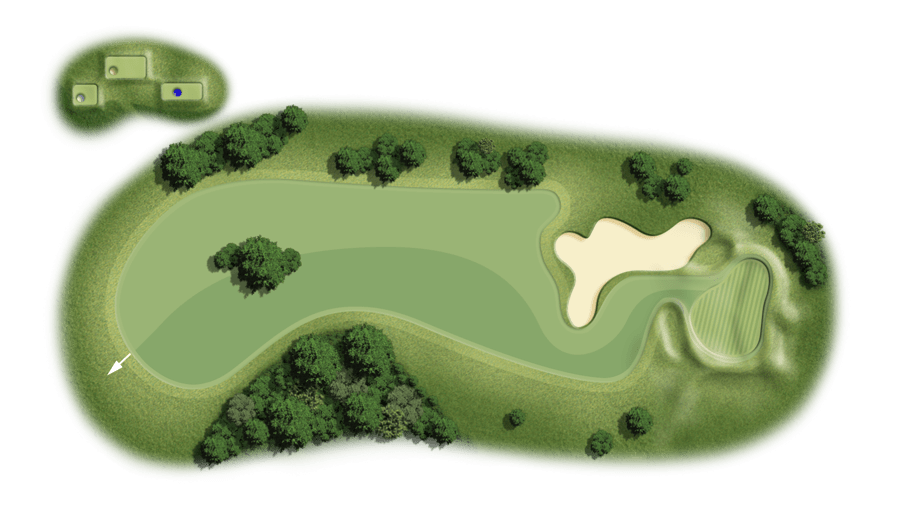
Hole 17
Par 4, Yards 322
Pro Tip
This tricky par 4 dog-leg to the right requires a well-shaped tee shot up the right side. This
leaves a short uphill second shot into the green that slopes from back to front.
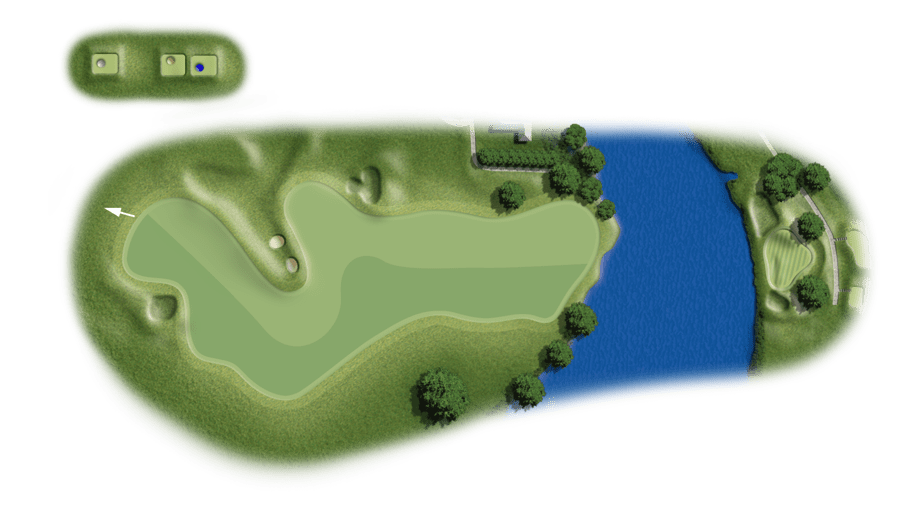
Hole 18
Par 5, Yards 523
Pro Tip
The fairway meanders away to the right for the safe shot. However, longer hitters can carry the grass bowl to enable them to carry the water with the second shot. An extra club is
advised when attempting to carry the water with the second shot. An extra club is advised
when attempting to carry the water, as there are no prizes for being short!
1. OUT OF BOUNDS
A ball over any estate boundary or fence is out of bounds. Other out of bounds areas are defined by white posts.2. FIXED SPRINKLER HEADS AND MANHOLE COVERS
All fixed sprinkler heads & manhole covers are immovable instructions and relief from interference by them may be obtained under rule 16.1. In addition, relief may be taken if a fixed sprinkler head positioned within 2 club lengths of the putting green intervenes on the line of play between the ball and the hole, provided the ball is not in a hazard but lies within 2 club lengths of the fixed sprinkler head; the ball may be marked, lifted, cleaned and dropped at the nearest point of relief which is (a) not nearer the hole (b) avoids such intervention and (c) is not a hazard or on the putting green1. OUT OF BOUNDS3. PENALTY AREAS
The reservoir to the left of the fairway on the 2nd and 7th hole are Red Penalty areas.1. OUT OF BOUNDS4. ROADS PATHS, YARDAGE DISCS, BRIDGES AND FENCES
Relief may be obtained without penalty under rule 16.1, if a players stance over the ball is hindered by and or the ball is lying on any of the tarmac roads, tarmac paths, public footpaths and the path running to the left and behind the first green, or coloured fairway yardage discs within the course, or the bridge. All other tracks and paths are an integral part of the course.1. OUT OF BOUNDS5. YOUNG TREES
If staked or guarded young trees interfere with a player’s stance or the area of their intended swing, the ball MUST be marked, lifted, cleaned and dropped without penalty within one club length from the relief area under rule 16.11. OUT OF BOUNDS6. GROUND UNDER REPAIR
In any area marked Ground Under Repair or GUR, a player must not play the ball form or take the stance in such ground; the player MUST take relief under rule 16.11. OUT OF BOUNDS7. PENALTY FOR BREACH OF LOCAL RULE
Match play loss of hole; stroke play – 2 strokes1. OUT OF BOUNDSETIQUETTE OF GOLF
All players must replace divots, rake sand bunkers after use and repair pitch marks on greens. Please do not take trolleys or buggies onto greens. Keep your place on the course, walk briskly between shots and be ready to play. Golfers must give priority to walkers before taking their golf shots| Hole | Silver Yards | Gold Yards | Par | Blue Yards | Par |
| 1 | 316 | 309 | 4 | 272 | 4 |
| 2 | 190 | 149 | 3 | 117 | 3 |
| 3 | 486 | 466 | 5 | 403 | 5 |
| 4 | 443 | 404 | 4 | 331 | 4 |
| 5 | 479 | 465 | 5 | 434 | 5 |
| 6 | 171 | 165 | 3 | 118 | 3 |
| 7 | 335 | 299 | 4 | 282 | 4 |
| 8 | 386 | 365 | 4 | 348 | 4 |
| 9 | 145 | 128 | 3 | 105 | 3 |
| 10 | 522 | 515 | 5 | 471 | 5 |
| 11 | 456 | 428 | 4 | 396 | 5 |
| 12 | 368 | 332 | 4 | 328 | 4 |
| 13 | 338 | 323 | 4 | 304 | 4 |
| 14 | 218 | 190 | 3 | 136 | 3 |
| 15 | 380 | 350 | 4 | 321 | 4 |
| 16 | 410 | 392 | 4 | 336 | 4 |
| 17 | 322 | 302 | 4 | 266 | 4 |
| 18 | 523 | 477 | 5 | 456 | 5 |
| Total | 6488 | 6059 | 72 | 5424 | 73 |
Membership Enquiry
If you are considering joining us, please contact the Membership Team and we will be delighted to assist you with your enquiry;
membership@brocket-hall.co.uk | 01707 368 700
Alternatively, please complete and submit the below form.